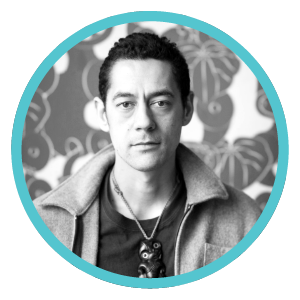Kai Atua
Food for Hope and Wellbeing
Kai Atua: food for hope and wellbeing is a three year kaupapa Māori research project funded by Te Apārangi (Royal Society of New Zealand) Marsden Fund. This project is grounded at the flax roots with diverse Māori food growing communities and examines how kaupapa Māori approaches to building resilient and sovereign food systems contribute to imagining new food nation futures.Aotearoa New Zealand’s Level Four COVID-19 Lockdown highlighted the significant role that food plays in our everyday lives. Supermarket cues, hoarding practices and subsequent discussions of food poverty, demonstrate an urgent need to reimagine our food futures as a nation. How might Māori food realities, values and principles (kaupapa) shape discussions about what we eat, how we obtain it, how we value it? Māori terms for hospitality (manaakitanga) and guardianship (kaitiakitanga) already play a role in current forms of New Zealand gastronationalism, a term describing how food and marketing practices sustain, and help shape, nationalist sentiment. We explain the broader cosmo-genealogical, cultural and ideological underpinnings of kaupapa Māori approaches to food and develop storytelling techniques that profile Māori-led future food agendas.
We pose Indigenous critiques of modern day food systems and make visible the production, retail and entrepreneurial experiences of kaupapa Māori food actors who live and work within a broken global food system. Kai Ora explains the growing symbolic and social significance of Māori food stories and develops kaupapa-based mediated storytelling practices to extend their transformative potential.
Our Kaupapa Māori Project Team:
Project Co-Leaders: Associate Professor Jo Smith, Dr Jessica Hutchings. Kairangahau: Yvonne Taura; Kaupapa Maori Designer: Dr Johnson Witehera; Rōpū Tikanga Rangahau Members: Garth Harmsworth and Dr Shaun Awatere. For further details contact: Jessica Hutchings – kiaora@jessicahutchings.org
DR JESSICA HUTCHINGS
Ngāi Tahu, Ngāti Huirapa, Gujarati
Project Co-Leader
Dr Jessica Hutchings (Ngāi Tahu, Ngāti Huirapa, Gujarati) is a kaupapa Māori researcher, activist, and hua parakore grower living on a small whānau farm in Kaitoke North of Wellington. She is an advocate for Māori food sovereignty and has been an active member of Te Waka Kai Ora (Māori Organics Collective) for the last decade. Her PhD is in Environmental Studies and she has worked for the last two decades in the Māori research sector leading and supporting kaupapa Māori research to deliver transformation across diverse Māori communities. She is a published author, with her last two books winning the non-fiction category at the Māori Book Awards. She is passionate about telling Māori food stories that are grounded kaupapa.

YVONNE TAURA
Ngāiterangi, Ngāti Ranginui,
Ngāti Tūwharetoa, Ngāti Uenuku,
Ngāti Hauā
Kairangahau
Yvonne Taura (Ngāiterangi, Ngāti Ranginui, Ngāti Tūwharetoa, Ngāti Uenuku, Ngāti Hauā) is a kairangahau Māori for Manaaki Whenua – Landcare Research, Hamilton. Her research interests are working collaboratively with iwi and hapū on various projects that implement kaupapa Māori approaches and processes. Most recently, Yvonne co-edited Te Reo o Te Repo, a wetland handbook that focused on Māori values and aspirations for wetland restoration.Yvonne has started her PhD with the University of Waikato, her topic will explore empowering iwi and hapū to utilise mātauranga Māori based science tools and frameworks in restoration and monitoring, in order to enact their kaitiakitanga responsibilities.

DR JO SMITH
Waitaha, Kāti Māmoe, Kāi Tahu
Project Co-Leader
Jo Smith (Waitaha, Kāti Māmoe, Kāi Tahu) has a longstanding interest in understanding how media shapes worldviews, relationships, and identities. For Jo, media also offers storytelling tools that can generate new forms of understanding and ways of being in the world. She has a Film Studies PhD from her hometown university (Otago) and currently works in the Media Studies programme at Victoria University of Wellington where she teaches Māori media, and issues connected with race, ethnicity, and identity. The author of Māori Television: the first ten years (2016, AUP), Jo has recently contributed to kaupapa Māori projects involving decolonisation and the media, Māori agribusinesses, and soil health.

GARTH HARMSWORTH
Ngāti Tūwharetoa
Rōpū Tikanga Rangahau
Garth Harmsworth (Ngāti Tūwharetoa) is a senior Māori environmental scientist with over 30 years experience. He has pioneered much of the collaborative Māori research for Manaaki Whenua – Landcare Research and across the NZ science sector, has led over 40 kaupapa Māori and science projects, given over 100 conference and workshop presentations, and produced to date about 100 refereed publications. Garth is a key researcher in the development of knowledge bases/information systems, bridging mātauranga Māori and western science, working with Māori communities and organisations, building Māori research capacity, and has extensive experience and skills in environmental planning and resource management.

DR JOHNSON WITEHERA
Tamahaki (Ngāti Hinekura), Ngā Puhi (Ngai-tū-te-auru)
Kaupapa Maori Designer
Johnson is a leading indigenous designer, creative director and consultant. His research considers how customary Māori knowledge and ways of thinking can be applied in contemporary settings. His creative works extend across designed communications, digital, interiors, urban design, product design and public artworks. He now applies his design expertise to work with businesses, community groups, and Government agencies to instigate design solutions that effect positive change in people, practice and place.

DR SHAUN AWATERE
Ngāti Porou
Rōpū Tikanga Rangahau
Shaun Awatere (Ngāti Porou) is a kairangahau Māori with Manaaki Whenua – Landcare Research, Hamilton. His work involves improving the incorporation of Māori values into economic decision-making for collective assets that will enable Māori organisations to make more kaupapa Māori attuned decisions. Shaun’s mahi involves providing holistic assessments for decision-makers that identify the potential impacts of proposed investment options on the economic, biophysical and kaupapa Māori based outcomes for collective assets. His mahi also identifies the trade-offs between short-term gain from expanding production and the additional costs of environmental mitigation versus the long-term benefits from managing collective asstes in a more sustainable manner consistent with the kaupapa Māori principles of kaitiakitanga, manaakitanga and whakatipu rawa.